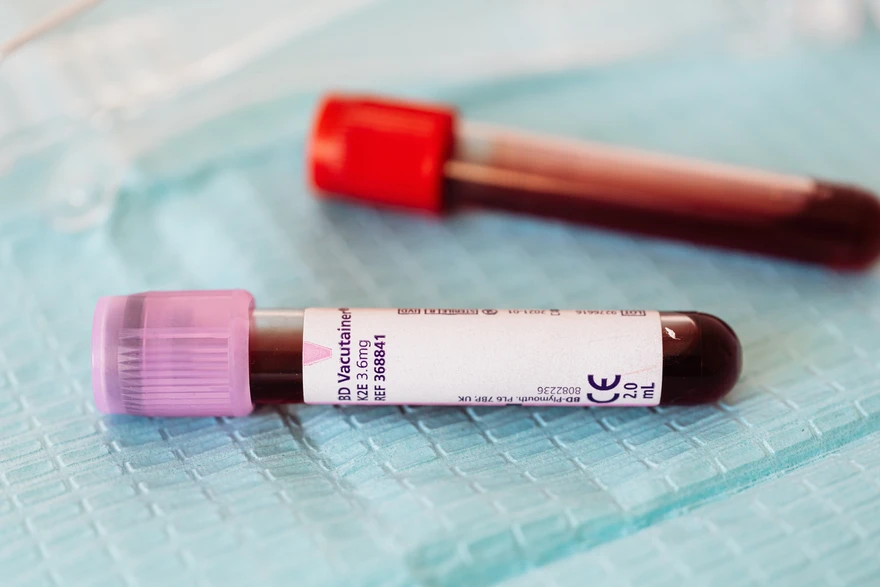Preventive Healthcare
Understanding PCV Levels: Decoding the Significance of Packed Cell Volume in Blood Tests
284064 Views
0

What is a Packed Cell Volume?
A Packed Cell Volume test, or PCV test, is a routine blood test that measures the proportion of red blood cells in your blood sample. By analysing this vital parameter, healthcare professionals can assess your blood's oxygen-carrying capacity, which helps detect any potential abnormalities that may indicate an underlying health condition or imbalance within your body. Also known as the hematocrit test, this screening test is used to identify the conditions of dehydration, anaemia, or polycythemia in individuals.
- Dehydration occurs when there is insufficient fluid intake or excessive fluid loss from the body.
- Anaemia is a reduced number or size of red blood cells or decreased haemoglobin levels.
- Polycythemia, on the other hand, occurs when there is an abnormal increase in red blood cell production by the bone marrow.
Hence, the PCV test is a simple yet powerful tool that aids in early detection and prevention of various blood-related disorders, ensuring timely medical intervention when necessary.
What is The PCV Test Used For?
The PCV in blood test measures the level of red blood cells in a blood sample. If the patient is suffering from anaemia, the PCV level is low. This means the percentage of red blood cells (RBC) is low. Whereas in the case of polycythemia, the packed cell volume is high. This hematocrit test also aids your healthcare professional in diagnosing or tracking your response to specific medical treatments. That is why medical professionals conduct this test as a complete blood count (CBC) component.
What Happens During The PCV Test?
The PCV test procedure is similar to a regular blood test. It does not require fasting or any other preparation. Typically, a medical attendant extracts a blood sample from a vein in your arm. So you may experience slight soreness in the affected area. However, there are no serious risks associated with a PCV test.
The lab then employs specific procedures on the blood sample, separating plasma and blood cells, and then measures to determine the percentage of red blood cells in your blood.
What is the Normal Range of PCV in the Blood Test?
The PCV normal range for males is typically between 38.3% and 48.6%, while the PCV normal range for females falls within the range of 35.5% to 44.9%. In children aged 15 and below, the acceptable PCV range may be between 30% to 44%. However, several factors, such as age, race, and gender, affect this expected range of PCV in blood tests.
Moreover, the definition of a standard percentage of red blood cells may differ slightly among various medical practices. The reason is that laboratories establish a healthy range based on the population's demographics in their specific area.
Why Do I Need a PCV Test?
A PCV (Packed Cell Volume) test is essential for various reasons, including the following:
- Identifying conditions such as - anaemia, polycythemia, or dehydration by measuring the volume of red blood cells in the blood.
- Assessing the effectiveness of treatments for conditions that affect red blood cells.
- Evaluation of how the body responds to interventions, including the impact of blood transfusions.
- Getting insights into overall health and the potential risk of developing certain medical conditions.
Why is PCV Lower in Females?
Adolescent females generally have a lower mean haemoglobin concentration in the blood cells than males. This is the leading cause of the lower PCV in blood tests observed in females. Moreover, pregnancy usually causes a slightly decreased PCV due to extra fluid in the blood.
What Are The Reasons Behind Low PCV in Blood Tests?
Medical professionals link lower PCV levels to various health conditions, including bone marrow disorders, cancer, kidney failure, thalassemia, sickle cell anaemia, and autoimmune diseases. A few low pcv symptoms are - pallid skin tone, feebleness, persistent fatigue, diminished energy levels, difficulty breathing, irregular respiratory patterns, and cold extremities (such as feet or hands). These may suggest an individual has a lower than normal PCV range.
How to Increase PCV in Blood Tests?
Various lifestyle and demographic factors contribute to an individual's hematocrit level. If your PCV test levels are in the lower range, here are some ways to increase PCV in blood tests:
- Administration of supplements like iron, vitamin B-12, and folic acid.
- Treatments such as blood transfusion, bone transplantation, oxygen therapy, and pain relief medications can be utilised.
- Include food products rich in iron, Vitamin A, Vitamin B12 and Folic Acid. Consider having more dairy products, leafy green vegetables, nuts, chocolates, whole grains, etc.
- Stay adequately hydrated, engage in regular exercise, and reduce alcohol intake.
Conclusion
Treatment for low Packed Cell Volume (PCV) involves a multifaceted approach, ranging from using supplements to considering more intensive treatments. These interventions are pivotal in restoring and maintaining optimal blood health. If you are looking for a trusted source to get your PCV tests done, get expert technicians at your home schedule for maximum convenience with Metropolis Healthcare. Access your reports easily with the user-friendly Metropolis TruHealth app and track your health insights quickly.


































 WhatsApp
WhatsApp